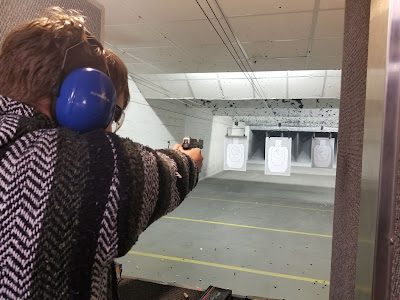During the really big Lottery of 1.6 billion run a few weeks ago, we on my crew at work were talking about being rich and private airplanes my lead commented "If I was gonna have a personal airplane, it would be a B757, it is a damm good airplane. especially with the Rolls engines." I had commented that our 57's had the Prat 2000's " He commented "Yep good engine but the Rolls is better, and the 57 is a fast plane especially if the engines are not derated.". Then we got to talking about what mods we would put on the plane and then President Trump's personal airplane got brought up and we had commented of we would try to "Out Trump Trump.." and we decided...Naaa but we would have some cool stuff on it like access to the cargo bays for motorcycles or a Mustang and drive the car on the autobahns or something. I am trained on the Airbus airplanes but I do like the Boeing 757, it is a really good plane and I heard that Boeing may try to find a replacement in the next 10 years since the B737-900 series just don't have the legs and it would plug a hole in the Boeing lineup that showed up after the B757 was discontinued.
A corporate jet maneuvering into a parking spot clipped the wing of Trump’s parked plane around 8:30 a.m., Trump’s company, The Trump Organization, confirmed. The plane was parked and not in use, it said.

A corporate jet maneuvering into a parking spot clipped the wing of Trump’s parked plane around 8:30 a.m., Trump’s company, The Trump Organization, confirmed. The plane was parked and not in use, it said.
The corporate jet, a twin-engine Bombardier Global Express, had three crew members aboard. It had just completed an 18-minute flight from Islip, on Long Island, and was being guided by ground personnel along a ramp near the general aviation terminal.
No one was on Trump’s plane.
Trump used the jet throughout his 2016 run for the White House but hasn’t done so since taking office, opting for Air Force One instead.
The Port Authority of New York and New Jersey, which operates LaGuardia, said there were no injuries and no impact on airport operations.
The extent of damage to the planes wasn’t immediately clear. According to the aviation tracking website FlightAware, the corporate jet flew Wednesday afternoon to Hartford, Connecticut, where Bombardier has a service center. Trump’s plane is blocked from being tracked on the site.
Trump bought his jet, a retrofitted commercial airliner, from the late Microsoft co-founder Paul Allen in 2011 for $100 million. It was previously used by a low-budget Mexican passenger carrier.
Trump flexed the jet as a symbol of wealth, power and convenience during his presidential campaign, using it to commute almost every night to New York, home to his Manhattan penthouse apartment.
The plane — painted black and red, with the Trump name in big, gold letters — features a bedroom, 24-karat gold-plated fixtures and leather seats, according to a Trump Organization video. During the campaign, it became known as Trump Force One and was a familiar backdrop for Trump’s airport hangar rallies.
Video of the Interior
The Boeing 757-200 is registered in the United States as N757AF and was built in 1991. It originally was delivered to Denmark's Sterling Airlines, and later, by 1993, operated by Mexico's TAESA. In 1995, it became a corporate business jet for Paul Allen's enterprises. In 2011, it was acquired by Trump for $100 million.
The aircraft is equipped with Rolls-Royce RB211 turbofans, a glass cockpit, and is configured to seat 43. The plane is fitted with a dining room, bathroom, shower, bedroom, guest room, and galley. Most fixtures are coated in 24k gold.
Donald Trump had planned to use the 757 for campaigning during his putative 2012 presidential bid. Trump used the 757 for transportation during his successful 2016 presidential campaign. After becoming President, Trump began to travel with Air Force One.







































